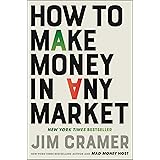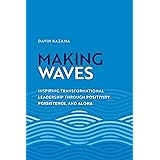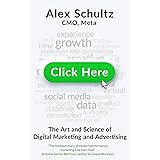The video above showcases the exciting potential within gold futures trading, demonstrating a rapid $1800 profit in just 20 minutes. While such quick gains are certainly eye-catching, they also highlight the dynamic and often high-stakes nature of the futures market. Understanding the mechanics behind such trades, along with the necessary strategies and risk management, is crucial for anyone looking to navigate this fast-paced environment.
Gold futures trading involves speculating on the future price movement of gold. Unlike buying physical gold, futures contracts represent an agreement to buy or sell a specific quantity of gold at a predetermined price on a future date. This allows traders to capitalize on both rising and falling gold prices without ever owning the underlying commodity.
Demystifying Gold Futures: What Makes Them Tick?
Gold has historically been a safe-haven asset, attracting investors during economic uncertainty. Its unique market dynamics make it an attractive target for futures traders seeking volatility and liquidity. The value of gold futures contracts is influenced by a range of global factors, from interest rate changes to geopolitical events.
One of the core features of futures trading is leverage. This allows traders to control a large contract value with a relatively small amount of capital, known as margin. While leverage amplifies potential profits, as seen in the video, it equally magnifies potential losses, making risk management paramount.
Understanding the Fundamentals of Gold Futures Contracts
A standard COMEX gold futures contract (GC) represents 100 troy ounces of gold. There are also smaller ‘mini’ and ‘micro’ contracts, such as the Micro Gold Futures (MGC), which represent 10 troy ounces and 1 troy ounce respectively. These smaller contracts offer more flexibility and lower capital requirements for individual traders.
The price of a gold futures contract moves in increments called ‘ticks’. For the standard GC contract, a one-tick movement (0.10 per ounce) equates to $10. Understanding these contract specifications is essential for calculating potential profits and losses accurately during any futures trading session.
Strategies for Rapid Profit Gold Futures Trading
Achieving a significant profit like $1800 in such a short timeframe, as highlighted in the video, typically involves specific market conditions and precise execution. This kind of rapid trading often falls into categories like scalping or day trading. These strategies aim to capture small price movements multiple times throughout the day.
Scalping involves entering and exiting trades quickly, often within seconds or minutes, to profit from minor price fluctuations. Day trading, while still short-term, might hold positions for several minutes to a few hours, closing all trades before the market closes. Both demand intense focus, quick decision-making, and robust market analysis.
Key Elements of Short-Term Trading Strategies
For success in fast-paced environments like gold futures trading, several elements are critical. Technical analysis tools are frequently employed to identify entry and exit points. Chart patterns, indicators like Moving Averages or RSI, and support/resistance levels guide traders’ decisions.
Volume analysis also plays a crucial role, indicating the strength behind price moves. High volume accompanying a price breakout, for instance, might signal a more reliable trend. Price action analysis, focusing purely on the movement of price bars, can also provide direct insights into market sentiment.
The Indispensable Role of Risk Management
The allure of quick profits in futures trading must always be balanced with a comprehensive understanding of risk. The leverage available means that losses can accumulate just as rapidly as gains. Effective risk management is not just a suggestion; it is the cornerstone of sustainable trading.
A trader might achieve a fantastic win like $1800 in 20 minutes, but without proper risk controls, a subsequent trade could wipe out those gains, or even more. The futures market is unforgiving of those who neglect to protect their capital.
Essential Risk Management Techniques in Futures Trading
One primary tool is setting stop-loss orders. A stop-loss automatically closes a trade if the price moves against your position by a predetermined amount, limiting your potential loss. This ensures that a single losing trade does not disproportionately impact your overall capital.
Position sizing is another vital component. This refers to the number of contracts you trade. Never risk more than a small percentage (e.g., 1-2%) of your total trading capital on any single trade. Even if you are highly confident, unexpected market movements can occur. Furthermore, maintaining sufficient margin in your account is crucial to avoid margin calls and forced liquidation of your positions.
Market Factors Influencing Gold Futures Prices
Gold prices are notoriously sensitive to global economic and political developments. Understanding these macro factors can provide a significant edge in predicting price movements for gold futures trading. This fundamental analysis complements the technical analysis used for pinpointing entry and exit points.
During times of economic uncertainty, such as recessions or geopolitical crises, gold often sees increased demand as investors seek a safe haven for their capital. Conversely, a strong economy with rising interest rates can make other assets more attractive, potentially dampening gold’s appeal.
Key Economic Indicators and Events
Several economic indicators have a strong influence on gold prices. Inflation data, for instance, often drives gold higher as it is seen as a hedge against the depreciation of fiat currencies. Interest rate decisions by central banks, particularly the Federal Reserve, also play a critical role; higher rates tend to make non-yielding gold less attractive.
Geopolitical tensions, from conflicts to trade disputes, can also send gold prices soaring. News releases related to these events, often unscheduled, can trigger rapid price movements. Keeping an eye on the economic calendar and global headlines is therefore paramount for any gold futures trader.
Building a Trading Plan for Gold Futures
The quick profit shown in the video is a result of a well-defined plan and swift execution. Aspiring traders should develop a comprehensive trading plan before entering the market. This plan should outline everything from your trading goals and preferred strategies to your risk management rules and daily routine.
A disciplined approach ensures that emotions do not dictate trading decisions, which is often a pitfall for new traders. Sticking to a predefined plan, even through periods of losses, is crucial for long-term success in gold futures trading.











